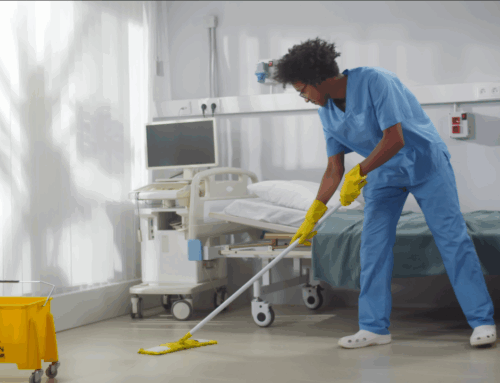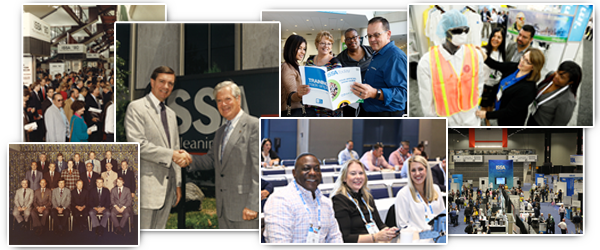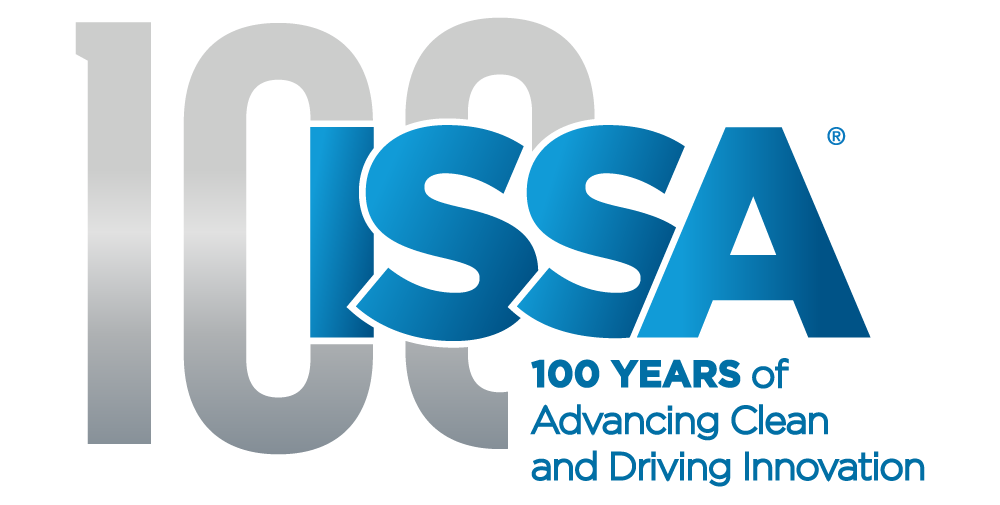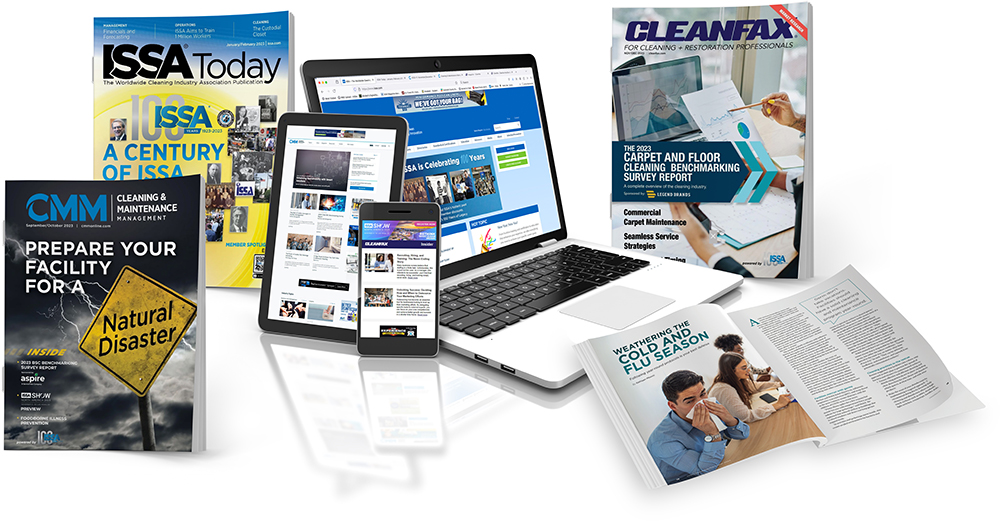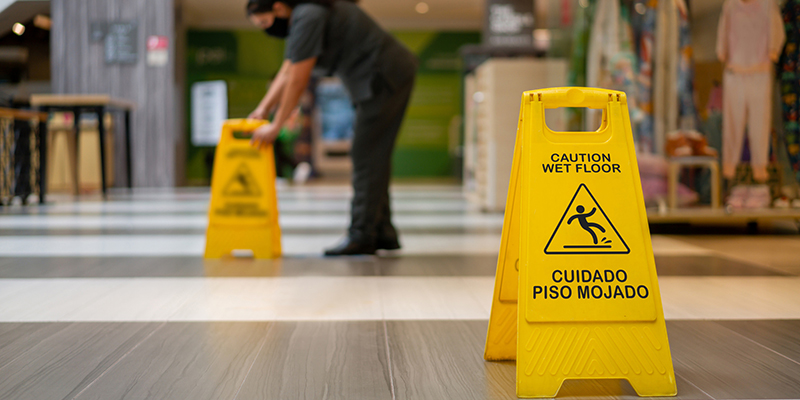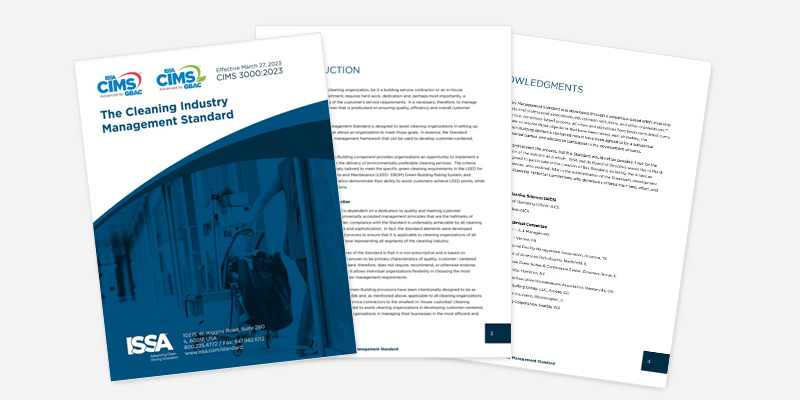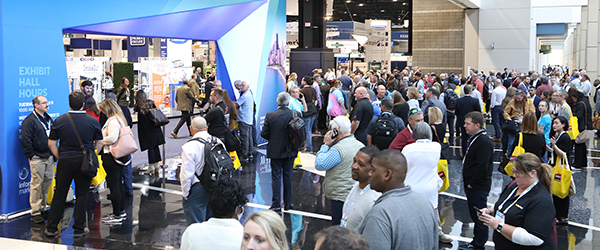Working Together to Stop the Spread of Disease
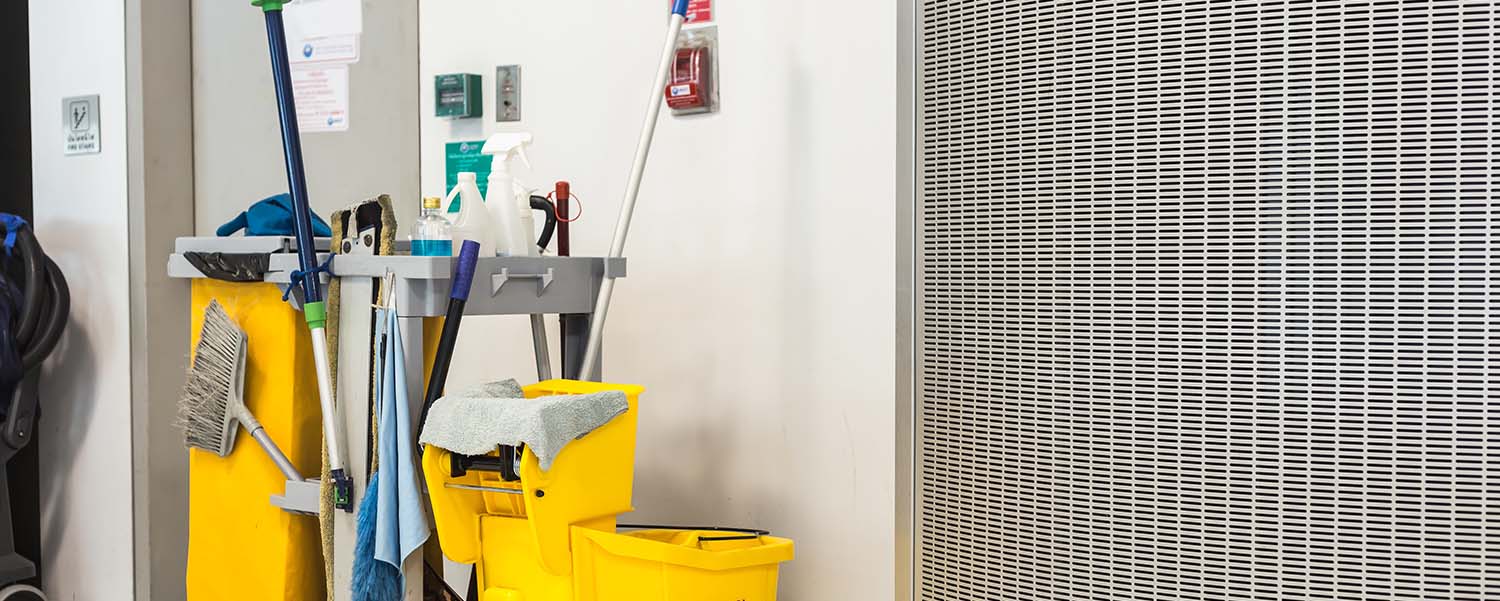
A major professional cleaning-related organization conducted a study looking into the types of comments people leave on social media sites concerning the appearance of restrooms in facilities such as restaurants, retail stores, and public facilities. The study revealed that building users pay surprisingly close attention to how well maintained restrooms are, and in at least one case, the manner in which they are cleaned.
Some of the comments made were complaints such as one that mentioned cleaning workers using the same mops and cleaning cloths to clean a variety of surfaces, whether it was a toilet, a faucet handle, or a countertop.
It is unfortunate to see that this incorrect cleaning procedure still occurs, because there is a considerable body of evidence indicating that using the same soiled cleaning tools, such as mops or “rags,” can spread contaminants from one surface to another. But in fact it is still happening—and frequently, as noted in other posts. The person who must lead the way in correcting this, and in promoting proper hygienic cleaning, is the person most facility managers turn to when it comes to cleaning: their jansan distributor.
Getting Knowledge Under Your Belt
Before providing any instruction, distributors and managers should become aware of some of the studies available, published by some of the most credible of organizations, on how the tools we use to clean surfaces—specifically, cleaning cloths and mops—can sometimes spread disease and cause cross-contamination.
For instance, a study published in 2004, “Household Cleaning and Surface Disinfection: New Insights and Strategies” in the Journal of Hospital Infection, found that in situations where the cleaning procedure fails to thoroughly eliminate contamination from one surface and then the same cloth is used to wipe another surface, “the contamination is transferred to that [new] surface.”1
And just to prove this is certainly not “new material,” one of the first studies on how cleaning tools can spread contaminants from one surface to another dates back to 1971.2 This study investigated microbial contamination of cleaning cloths and their potential to spread contamination. Once again, the researchers reported that wiping surfaces with contaminated cloths can contaminate hands, equipment, and other surfaces.
As to the spread of contaminants using mops specifically, part of this 1971 study reads as follows:
Following the demonstration of massive spread of bacterial contamination throughout the hospital by the wet-mopping techniques in use, quantitative studies were undertaken to determine the source of contamination and to institute measures of control. It was found that mops, stored wet, supported bacterial growth to very high levels and could not be adequately decontaminated by chemical disinfection. Laundering and adequate drying provided effective decontamination, but buildup of bacterial counts occurred if mops were not changed daily or if disinfectant was omitted from the wash water.
Steps You Can Take
These studies and numerous others are significant because they have been published and reported in prominent medical- and health-related journals in Canada, the United States, and around the globe. It is clear that a problem does exist when cleaning cloths and mops are used and then reused.
Convincing your customers of this problem is the easy part. The studies speak for themselves, and most cleaning professionals realize their primary job is to clean for the health of building users. However, the harder part is offering alternatives.
One alternative is provided by the U.S. Centers for Disease Control and Prevention (CDC),3 which suggests contaminated, reusable cleaning cloths (and it is assumed mops) can often be effectively cleaned by washing with detergents in hot water and drying for two hours at 176 degrees (F). This is about 40 degrees hotter than the drying temperature of most commercial and residential dryers. The CDC also mentions that some cleaning cloths may not hold up under this high-heat setting.
Another option the CDC offers is to decontaminate cloths and mops during cleaning.
Facility managers know that cleaning professionals are unlikely to decontaminate cleaning cloths and mops while cleaning. They are obliged to clean a given square footage per hour, which essentially eliminates extra time for decontaminating during cleaning. Further, in many cases, an industrial-type dryer would be necessary to dry these cleaning tools at a sufficiently high temperature, making both of these recommendations impractical.
Distributors and cleaning professionals may consider additional systems and equipment to limit the spread of contaminants from one surface to another. Solutions such as spray-and-vac systems, trolley buckets that dispense cleaning solution directly to the floor without a mop, flat-surface cleaning systems, and even cleaning cloths that can be folded into quadrants can help to eliminate this problem altogether or reduce it significantly.
At the end of the day, distributors and cleaning professionals must work together to stay on top of the latest trends and methods. This will help to ensure cleaning tasks are carried out correctly, all in an effort to protect human health.
1 Exner, M., Vacata, V., Hornei, B., Dietlein, E., Gebel, J. “Household Cleaning and Surface Disinfection: New Insights and Strategies,” Journal of Hospital Infection, 56, Supp. 2 (2004): 70-75.
2 Westwood, J. C., Mitchell, M. A., Legacé, S. “Hospital Sanitation: The Massive Bacterial Contamination of the Wet Mop,” Applied Microbiology, 21, no. 4 (1971): 693-7.
3 Rutala, W. A., Weber, D. J., and the Healthcare Infection Control Practices Advisory Committee (HICPAC). Guideline for Disinfection and Sterilization in Healthcare Facilities, 2008, CDC.

